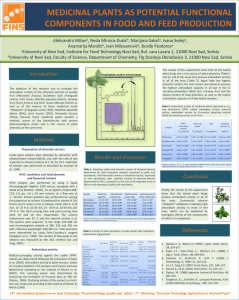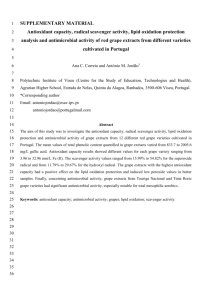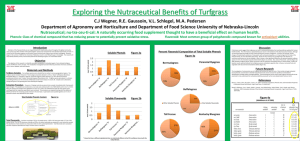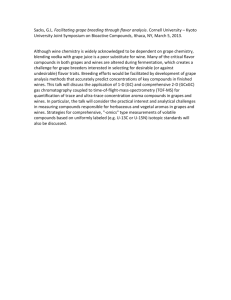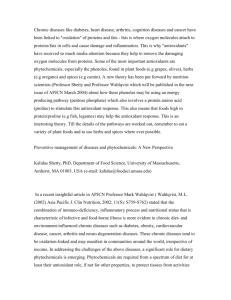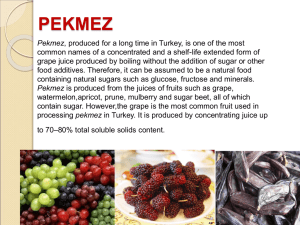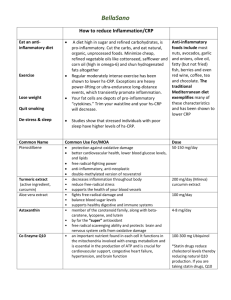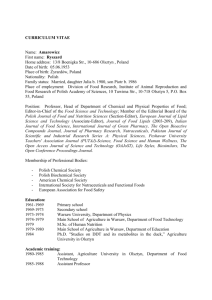Publication Here
advertisement
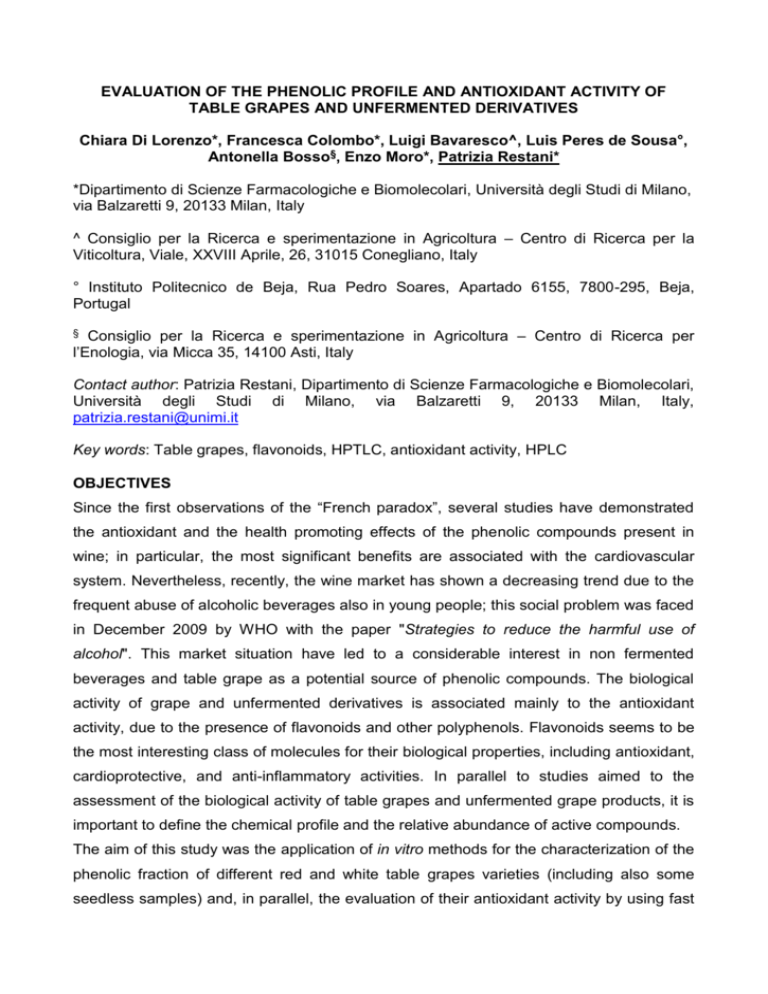
EVALUATION OF THE PHENOLIC PROFILE AND ANTIOXIDANT ACTIVITY OF TABLE GRAPES AND UNFERMENTED DERIVATIVES Chiara Di Lorenzo*, Francesca Colombo*, Luigi Bavaresco^, Luis Peres de Sousa°, Antonella Bosso§, Enzo Moro*, Patrizia Restani* *Dipartimento di Scienze Farmacologiche e Biomolecolari, Università degli Studi di Milano, via Balzaretti 9, 20133 Milan, Italy ^ Consiglio per la Ricerca e sperimentazione in Agricoltura – Centro di Ricerca per la Viticoltura, Viale, XXVIII Aprile, 26, 31015 Conegliano, Italy ° Instituto Politecnico de Beja, Rua Pedro Soares, Apartado 6155, 7800-295, Beja, Portugal Consiglio per la Ricerca e sperimentazione in Agricoltura – Centro di Ricerca per l’Enologia, via Micca 35, 14100 Asti, Italy § Contact author: Patrizia Restani, Dipartimento di Scienze Farmacologiche e Biomolecolari, Università degli Studi di Milano, via Balzaretti 9, 20133 Milan, Italy, patrizia.restani@unimi.it Key words: Table grapes, flavonoids, HPTLC, antioxidant activity, HPLC OBJECTIVES Since the first observations of the “French paradox”, several studies have demonstrated the antioxidant and the health promoting effects of the phenolic compounds present in wine; in particular, the most significant benefits are associated with the cardiovascular system. Nevertheless, recently, the wine market has shown a decreasing trend due to the frequent abuse of alcoholic beverages also in young people; this social problem was faced in December 2009 by WHO with the paper "Strategies to reduce the harmful use of alcohol". This market situation have led to a considerable interest in non fermented beverages and table grape as a potential source of phenolic compounds. The biological activity of grape and unfermented derivatives is associated mainly to the antioxidant activity, due to the presence of flavonoids and other polyphenols. Flavonoids seems to be the most interesting class of molecules for their biological properties, including antioxidant, cardioprotective, and anti-inflammatory activities. In parallel to studies aimed to the assessment of the biological activity of table grapes and unfermented grape products, it is important to define the chemical profile and the relative abundance of active compounds. The aim of this study was the application of in vitro methods for the characterization of the phenolic fraction of different red and white table grapes varieties (including also some seedless samples) and, in parallel, the evaluation of their antioxidant activity by using fast screening methods. METHODOLOGY The methods included both spectrophotometric and chromatographic assays for the characterization of the phenolic fraction of grape samples. Fast screening methods included: 1) Folin-Ciocalteu’s assay for the measurement of total polyphenol content; 2) the pH differential method for the determination of total anthocyanin content, according to AOAC official method; 3) HPTLC (High Performance Thin Layer Chromatography) for the measurement of antioxidant activity of active compounds by using DPPH (1,1-diphenyl-2picrylhydrazyl). Quantitative analysis of the main flavonoids was performed by HPLC (High Performance Liquid Chromatography), using a gradient elution and a diode-array detector. RESULTS In qualitative analysis, grape samples showed a significant phenol content and a remarkable antioxidant activity, particularly when red varieties are considered. Qualitative HPTLC analysis showed that, in all red table grapes varieties, malvidin-3-O-glucoside was the most representative anthocyanin. As for white grape samples, flavanols (catechins) and flavonols (quercetin-3-O-glucoside) were the most representative compounds, presenting also the highest antioxidant activity. Quantitative analysis confirmed that malvidin-3-O-glucoside and peonidin-3-O-glucoside were the most abundant anthocyanins in red varieties, while in white varieties quercetin-3-O-glucoside was the most representative compound. Seedless varieties showed also a high content of kaempferol-3O-glucoside (red varieties) and caftaric acid (white varieties). CONCLUSIONS The methods used in this study allowed a qualitative and quantitative analysis of the phenolic compounds in table grapes and the evaluation of the associated antioxidant activity. Furthermore, our results show also that table grapes contain an interesting phenolic content and a significant antioxidant activity, justifying their use in the diet as a source of healthy compounds. This experimental work has been developed during the OIV Research Grant (2013-2014) and funded by OIV. The results of the work have been obtained by using methods developed in the framework of the European Project PlantLIBRA funded by the European Community’s Seventh Framework Programme (FP7/2007-2013) under Grant agreement no. 245199. This paper does not necessarily reflect the Commission views of its future policy on this area.




